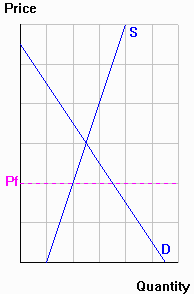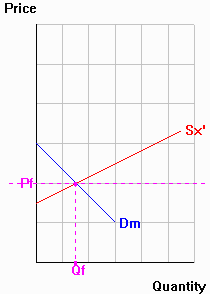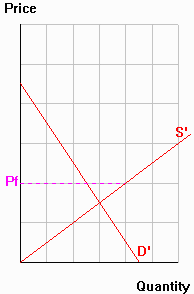| 2. |
Suppose that in the short run, labor is the only
variable input in the production of wheat and steel. Suppose that both South Korea (SK)
and the United States (US) devote millions of labor hours to the production of both goods,
with the following hypothetical productivity information at their current output levels: |
|
 |
Output per labor hour |
Opportunity cost
per... |
| Wheat |
Steel |
Bushel of Wheat |
Pound of Steel |
| US |
10 bushels |
100 pounds |
|
1/10 bu. of Wheat |
| SK |
1 bushel |
50 pounds |
|
|
| US/SK |
10 |
|
-------------------- |
|
|
a. |
Complete the table above. |
|
b. |
If there were trade between the US and South Korea in these
two products, who would tend to export steel and import wheat? Explain briefly. |
|
c. |
Suppose that the US and South Korea agree to trade
a total of 150
pounds of steel for 6 bushels of wheat. Suppose that the US then switches 1 labor hour
from steel production to wheat production while SK switches 4 labor hours from wheat
production to steel production. Complete the table below to verify that after the
production adjustment and the exchange the US and South Korea each ends up with
more steel and more wheat than it had initially. |
|
|
| |
US: 1 labor hour shifts to W |
SK: 4 labor hours shift to S |
World |
| Wheat |
Steel |
Wheat |
Steel |
Wheat |
Steel |
| DProduction |
+10 |
-100 |
|
|
|
|
| Trade |
|
|
|
|
--- |
--- |
| DConsumption |
|
|
|
|
|
|
|
| |
|
|


